HOT SPRINGS, South Dakota – A budding national reputation for healing mineral waters spawned this town of 3,400 in the early 1900s. Appreciative of that source, today’s area residents have fended off proposed radioactive uranium mining in the aquifers for more than four decades. This summer of 2022, they scored a breakthrough. They collected enough signatures to obtain a ballot measure that would declare the activity a “nuisance” in Fall River County.
If the measure passes in the county’s Nov. 8 general election, then an interested party could take legal action to prevent or stop the nuisance, according to South Dakota law. In light of federal and state permitting that favors the mining, this curious local achievement was the latest outcome in a litany of grassroots mobilizations, petition sponsor Susan Henderson told The Esperanza Project.
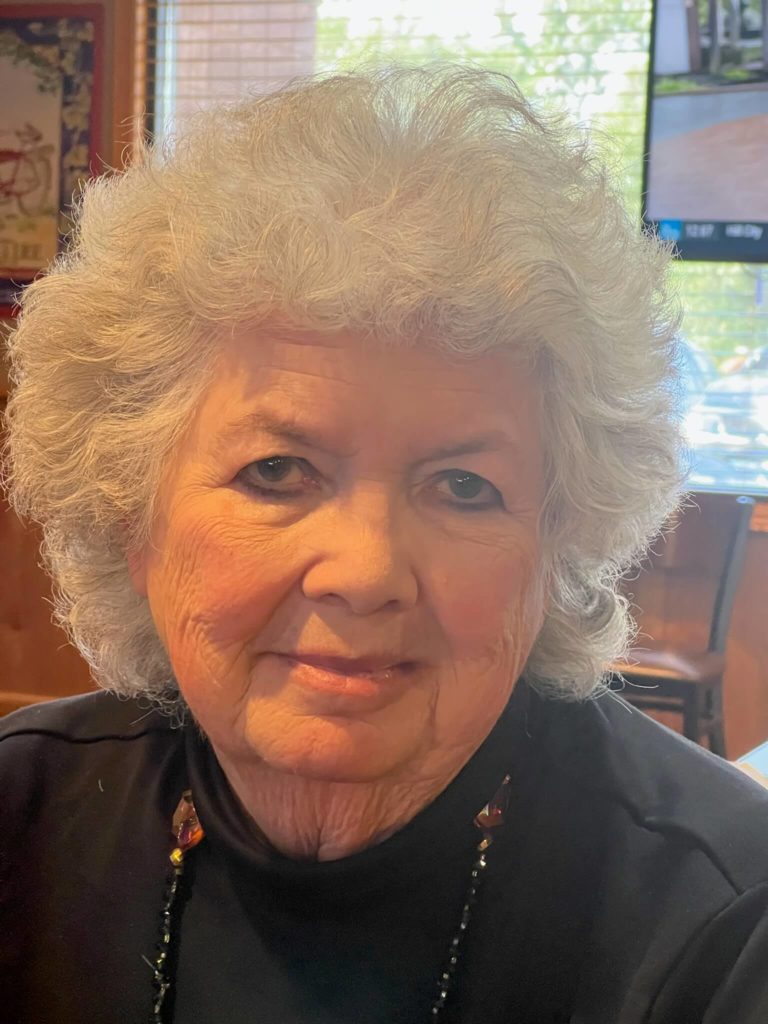
“I think that people have become educated about uranium mining and the horrendous danger it presents for our underground water supplies — that they could be polluted, that they could be greatly used up,” she said.
Henderson is among cattle ranchers who dread losing hard-won quality livestock water to the nuclear industry. Her late father established their ranch in Fall River County because his folks vacationed here, arriving on the train from San Francisco to bask in the warm springs spa and resort ambience that kindled the local tourist industry.
The petition drive, mounted months ago, garnered almost 450 valid registered voters’ signatures, the county commission certified on Aug. 11. According to organizer Cheryl Fair, only 260 were required to legitimize the petition.
“We won…. when I got in my car, I was so grateful and relieved, tears of joy were flowing from my eyes.”
Sarah Peterson, grassroots leader of It’s All About the Water
The accomplishment was not due to a commonplace campaign conducted on social media. Rather, a couple dozen staunch environmental protagonists went from location to location, during snow and shine, gathering supporters’ names. The signers called for an ordinance “in proper form” stating only: “URANIUM MINING IS A NUISANCE IN FALL RIVER COUNTY.”
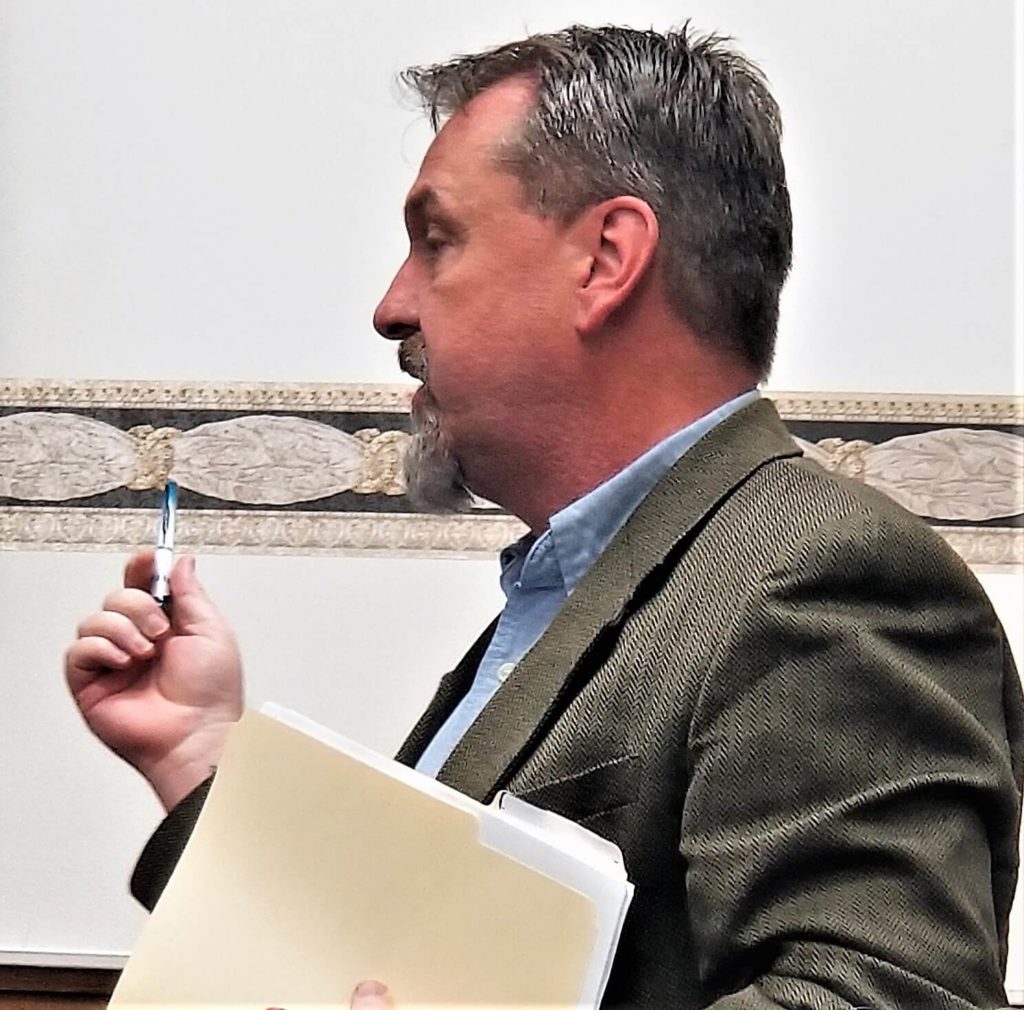
Former Fall River County State’s Attorney Jim Sword, who drafted it, explained to commissioners that South Dakota Codified Law includes a chapter providing that counties can declare and enforce a nuisance abatement measure. Since Fall River County has no planning and zoning rules, he reasoned, “We had to be a little bit creative.”
Sarah Peterson, a leader of the grassroots organization It’s All About the Water, tallied 21 people from the county of 6,000 inhabitants who attended the special commissioners’ meeting to approve Auditor Sue Ganges’ signature count. “We won,” Peterson exclaimed afterward. “When I got in my car, I was so grateful and relieved, tears of joy were flowing from my eyes,” she told The Esperanza Project.
The commission vote was 4-1 in favor of placing the initiative on the ballot. The next day, the county sent the proposed ordinance to the South Dakota Secretary of State in the nick of time for printing in the Nov. 8 general election.
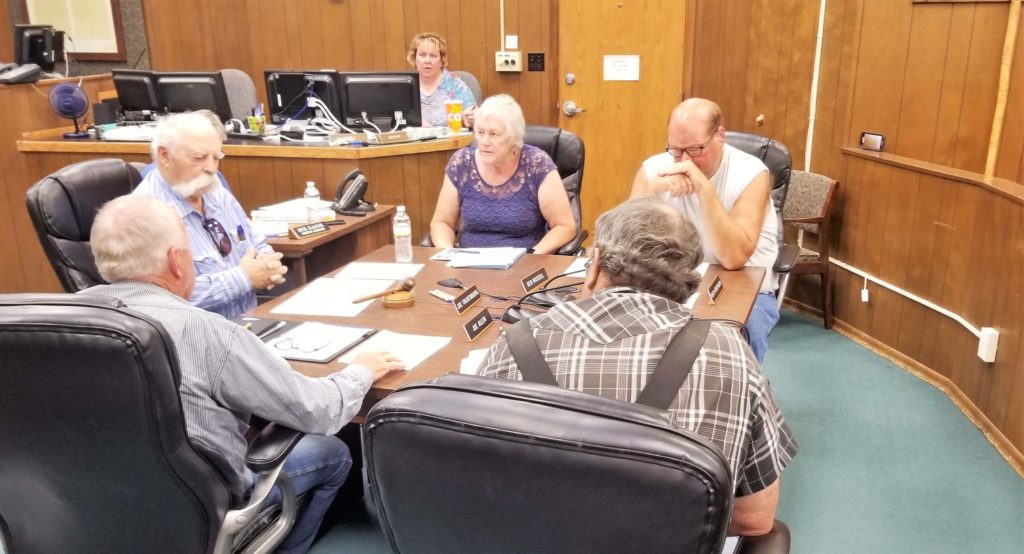
citizen-initiated measure on the November general election ballot that would classify uranium mining as
a nuisance. Photo by Talli Nauman
As the county State’s Attorney, Lance Russell drafted the ballot language: “The initiated measure would make uranium mining an unlawful nuisance in Fall River County. Vote yes to adopt the initiated measure. Vote No to leave the law as it is.” Simple as that.
“I think that people have become educated about uranium mining and the horrendous danger it presents for our underground water supplies.”
Petition sponsor Susan Henderson
Former County Commissioner Glenn Reaser said he favors the measure. “I think the commissioners need to find out how the the people of Fall River County feel about it,” he told The Esperanza Project. “I guess I sense that there’s a lot of opposition to it and you know anytime you talk about water that’s one of the most precious things that we have.”
Yet the sweet scent of success carried complex dark undertones. For one thing, Sword warned, the proponents of mining would likely apply for a judicial writ of prohibition to keep the measure off the ballot. “They’re not going to lay down for this. It’s still an uphill battle,” he said.
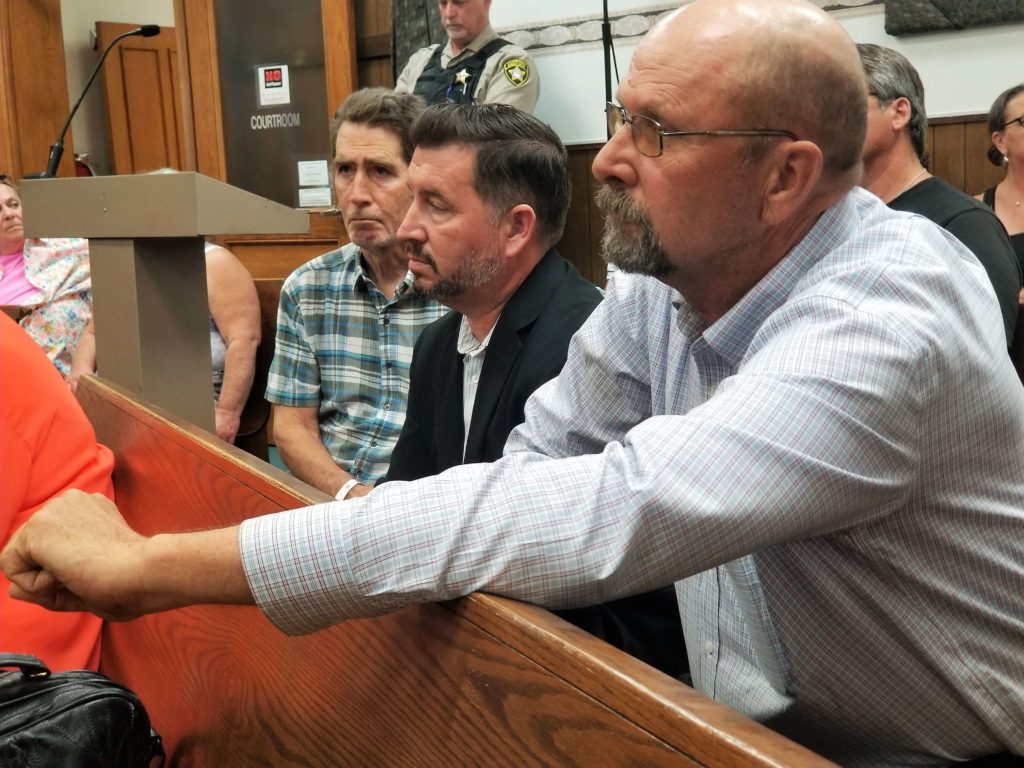
measure from taking effect. “It will be struck down, and I would take any kind of wager you’d like on it,”
he vowed. Photo by Talli Nauman
Their predictions reflected a legacy of strife experienced by water protectors and mining opponents, as well as by project advocates. That heritage manifested itself in a federal Circuit Court ruling Aug. 9 written by District of Columbia Appellate Judge Neomi Rao, a controversial appointee of former U.S. President Donald Trump. In one of the most important court battles of the protracted struggle, she handed the foreign mining interest the high ground.
She denied the Oglala Sioux Tribe’s claim that the federal Nuclear Regulatory Commission broke the country’s bedrock conservation and cultural resource laws — the National Environmental Protection Act and the National Historical Preservation Act — by granting a license to handle radioactive materials and waste at the proposed Fall River and Custer County uranium extraction site.
Judge Rao concluded that the “tribe fails to demonstrate any NEPA deficiencies that require setting aside the commission’s decisions” in licensing radioactive materials and waste handling. The commission referenced here is the Nuclear Regulatory Commission.
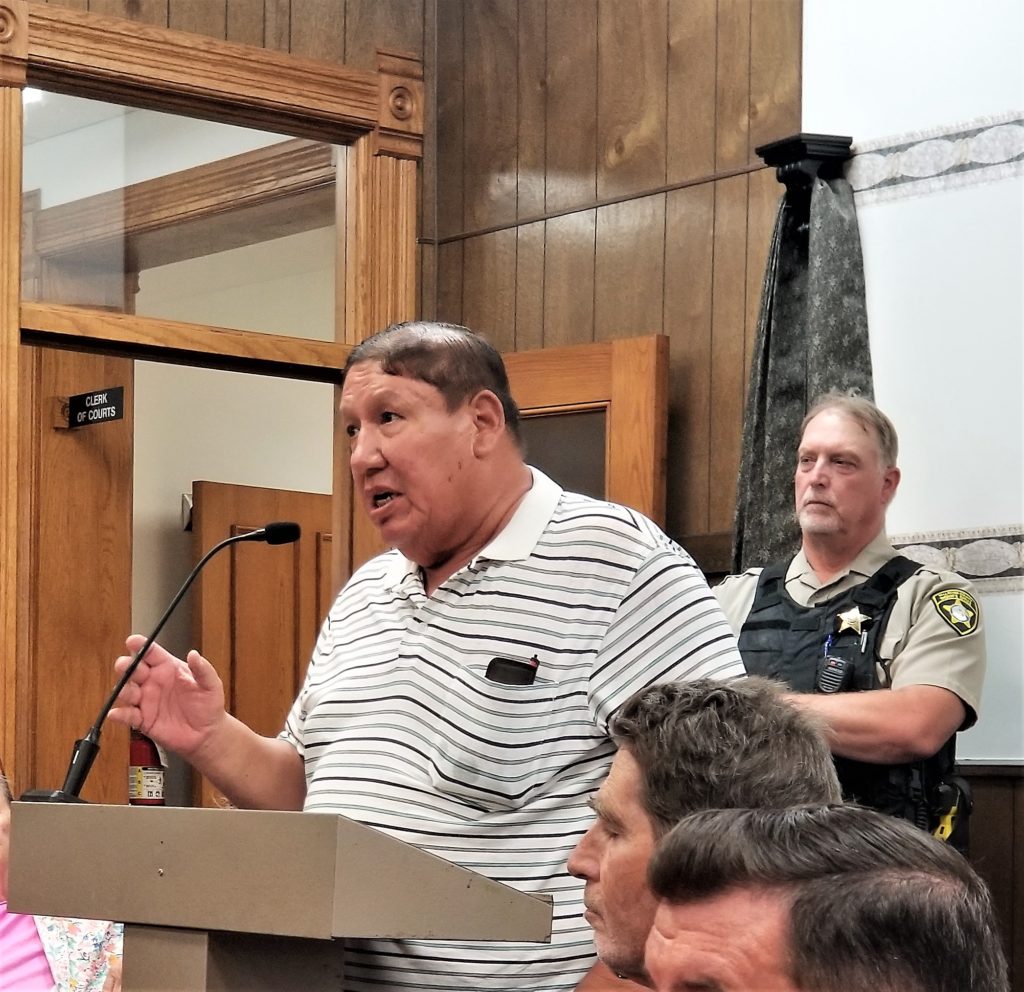
Oglala Sioux Tribe Water Resources Department Administrator Reno Red Cloud Sr. reminded the Fall River County Commission that the U.S. Constitution designates treaties the supreme law of the land and that the tribes’ Fort Laramie treaties predate the establishment of South Dakota: The treaty tribes are on record in opposition to uranium mining. His Oglala Lakota County is adjacent to Fall River County, contracting with it to provide executive services. “I support the nuisance petition; our tribe does,” he said. “We’d like to see everybody have a voice in this uranium mining issue so I think it’s only fair.”
Here on mostly private property 50 miles from the Oglala Sioux Tribe’s Pine Ridge Reservation, Powertech USA Inc., seeks myriad permits for the first in-situ, or solution, mining and milling operation to extract and process uranium in South Dakota. A wholly owned subsidiary of the Vancouver, Canada-registered transnational enCore Energy Corp., the company has procured access to a growing number of parcels over the 12 years since the application launch. It now claims more than 16,000 acres in the Dewey Burdock Project area, some in the adjacent state of Wyoming.
State and local investors sold or leased rights for the project. They bought shares at the outset before the 2011 nuclear power plant disaster at Fukushima blasted the bottom out of the uranium market worldwide. Their assent to the production created enmity with neighbors who prioritize conservation. As many as 6,000 improperly abandoned and Superfund-eligible exploration holes and open pits remain from early uranium operations in the 20th Century.
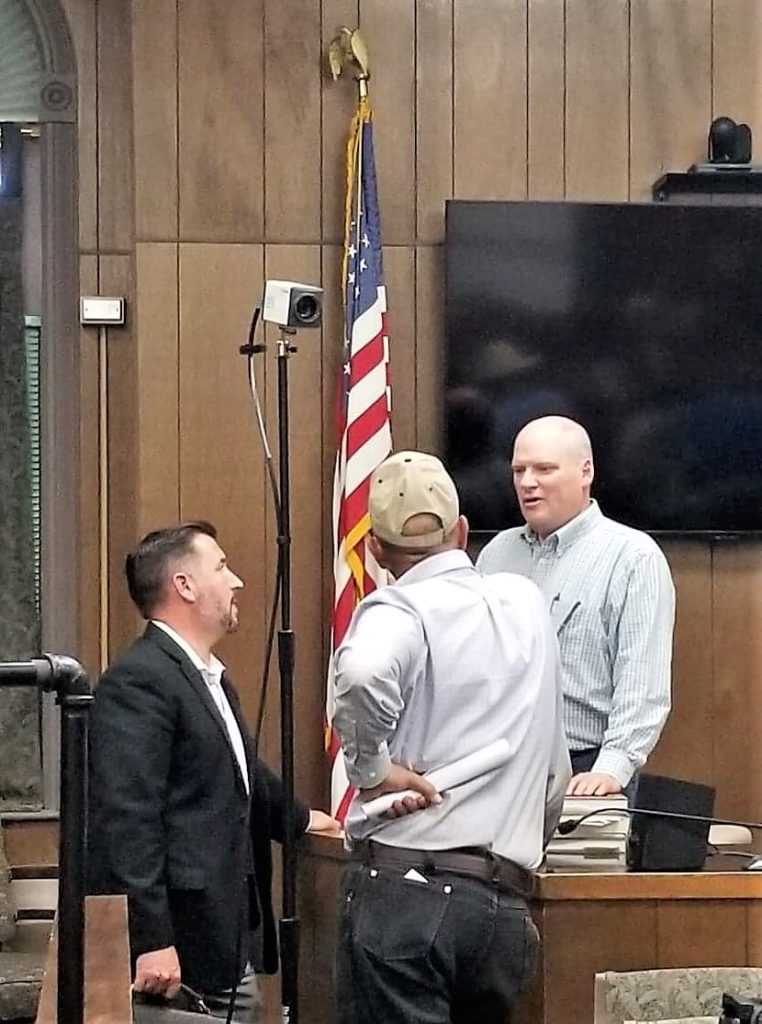
The proposed in-situ mining process chemically leaches uranium from porous rock that supports an underground water table. It uses the water to pump the dissolved mineral to the surface. There, facilities concentrate it into more highly radioactive yellow cake, separating the hazardous waste. Both the pay dirt and the waste must be transported to distant approved facilities for further treatment. Meanwhile, the millions of gallons of water produced are rendered unsafe for drinking and are either discharged on the land or released into the earth via underground injection control wells. The ultimate purpose is to supply nuclear fuel and weapons manufacture, for which no adequate or safe waste disposal method has been discovered.
The company seeks 8,500 gallons of water a minute from the Inyan Kara Aquifer, which is currently a major drinking source for livestock, the basis of the area’s top economic activity. It also seeks 550 gallons a minute from the Madison Aquifer over a 20-year period. The Madison is the biggest source of municipal water supplies in Hot Springs and several other area communities. It intersects with tributaries of the Cheyenne, Missouri, and Mississippi rivers.
South Dakota would be providing the water free of charge. After an initial permit period, the company would be eligible to reapply for more water use, raising suspicions that the unspoken intention of the applications is foreign control of public water. In current and predicted drought conditions, this rankles many of the locals.
Like the Hot Springs City Council, the Rapid City Common Council — governing board for the area’s largest urban concentration — responded to grassroots pressure by approving a resolution in 2013 opposing the uranium mining “due to the potential risk to the Madison Aquifer.” Much of the city’s drinking water comes from the aquifer. The project would use more Madison water than the city did at the time. The urban population has grown since.
The Great Plains Tribal Chairmen’s Association urged the common council to pass the resolution. The association supports the Oglala Sioux Tribe in its administrative and judicial complaints over permits, submitting documentation related to the Dewey Burdock cases.
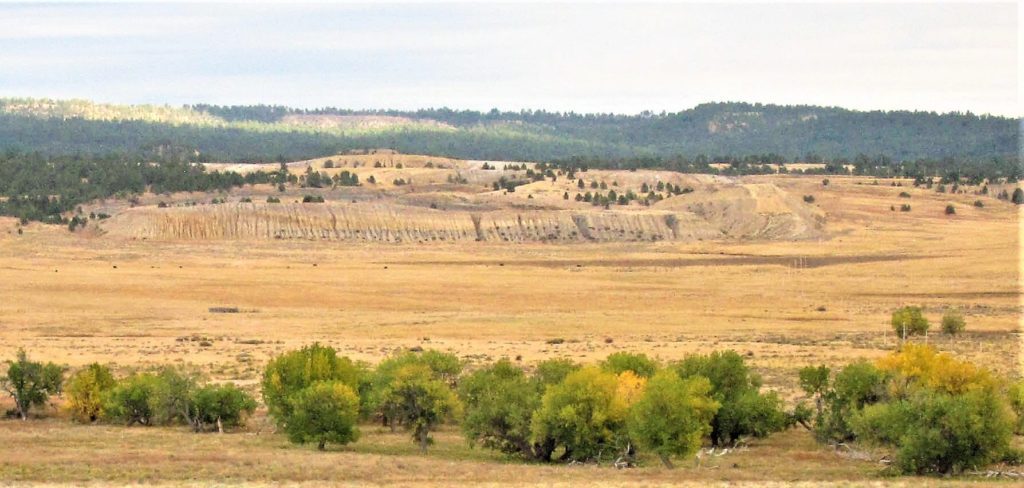
The EPA has issued draft permits to punch some 4,000 new injection well holes for the deep underground release of produced water into the Minnelusa Aquifer. In addition, the agency has published a regulation exemption, so that the project would not have to meet the public health protection standards of the Clean Drinking Water Act.
That’s because of the U.S. Nuclear Regulatory Commission finding that “the restoration of an ISL-mined aquifer to pre-mining water quality is an impossibility.” The U.S. Geological Survey has found that no in-situ uranium mining has ever been able to return water quality to pre-mining cleanliness.
Three days of EPA public hearings on the draft permits drew about 700 people in 2017. A 93-percent super-majority of about 200 witnesses testified against the permitting. Tribal government representatives of Indian reservation populations living downstream from the surface water tributaries at the project site were among those who objected.
Along with individual tribal members, they noted that the drilling would take place in the Indigenous sacred ceremonial grounds of the Black Hills, in the Native nations’ unceded 1868 Ft. Laramie Treaty territory. They demanded government-to-government consultation with federal leaders to address the issue, as required by environmental and historical preservation laws.
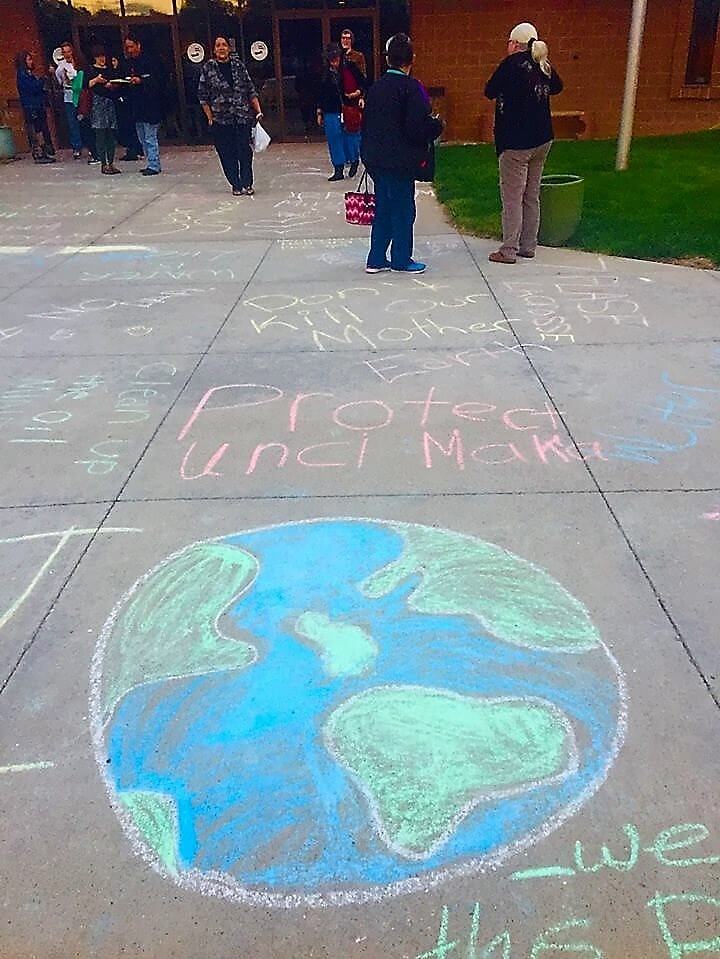
A Missouri State University study identified the main citizen concerns voiced: health effects of radioactivity released by uranium, underground water contamination, land and environmental destruction due to mining, lack of Native American consultation, and cultural rights to water based on historic treaties.
The study found that water contamination was by far the most common concern expressed in 1,500 additional written comments. The study also found that 95.3 percent of the written comments reflected flat-out opposition to the Dewey Burdock uranium project.
Nonetheless, EPA issued the injection well permits in November 2020. The Oglala Sioux Tribe launched an administrative review of the permit decisions with the agency’s Environmental Appeals Board and sued in court over the Clean Drinking Water Act Exemption. The tribe plans to seek further judicial review if the administrative challenge is not resolved to its satisfaction.
The tribe finds itself in good company. After U.S. President Joe Biden took office, his EPA staff put the permitting on a four-month hold. Following its expiration, participants in It’s All About the Water, Black Hills Clean Water Alliance, Dakota Rural Action, Owe Aku, Sisterhood to Protect Sacred Water, and other community non-profits marshalled nearly 6,000 signers for a May 2022 petition. Their request was for agency Administrator Michael Regan to listen to the people and “WITHDRAW UNDERGROUND INJECTION CONTROL PERMITS FOR THE PROPOSED DEWEY BURDOCK URANIUM MINE UNTIL TRIBAL CONSULTATION IS COMPLETED.”
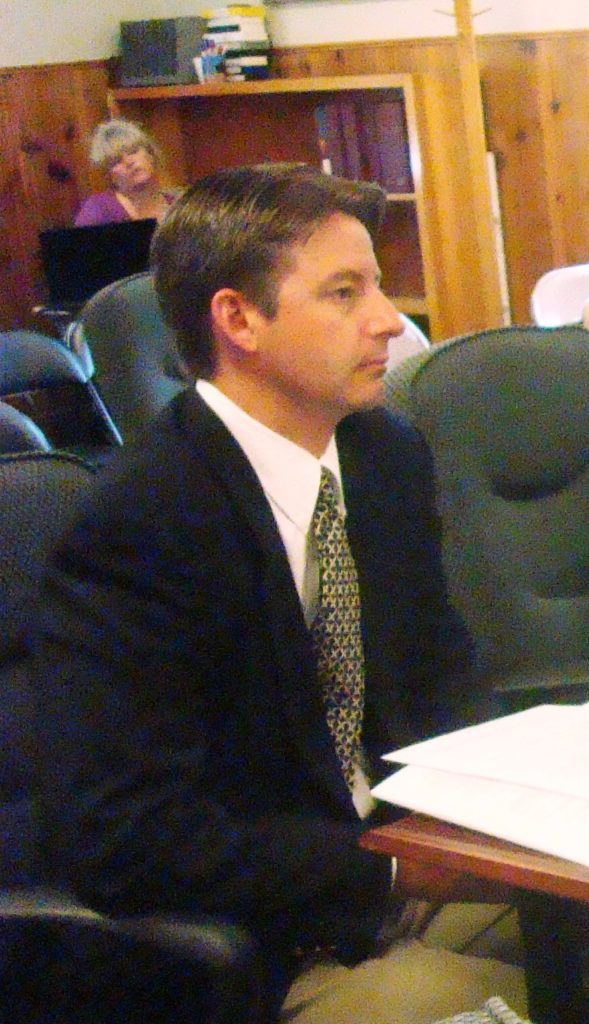
The federal Bureau of Land Management, for the first time under the supervision of a Native American, Interior Secretary Deb Haaland, has yet to begin its permitting review for the small portion of the impacted area in its jurisdiction.
The Rao decision was linked to an order allowing the tribal government 45 days to ask for a broader audience on the bench. So, the tribe is considering a request for a rehearing in front of the entire Circuit Court, attorney Jeff Parsons told The Esperanza Project. “She definitely made very short work of our fairly complicated legal arguments. We’ve got some significant legal issues here,” he told The Esperanza Project. “So, you know this is not the last chapter, even if this decision holds.”
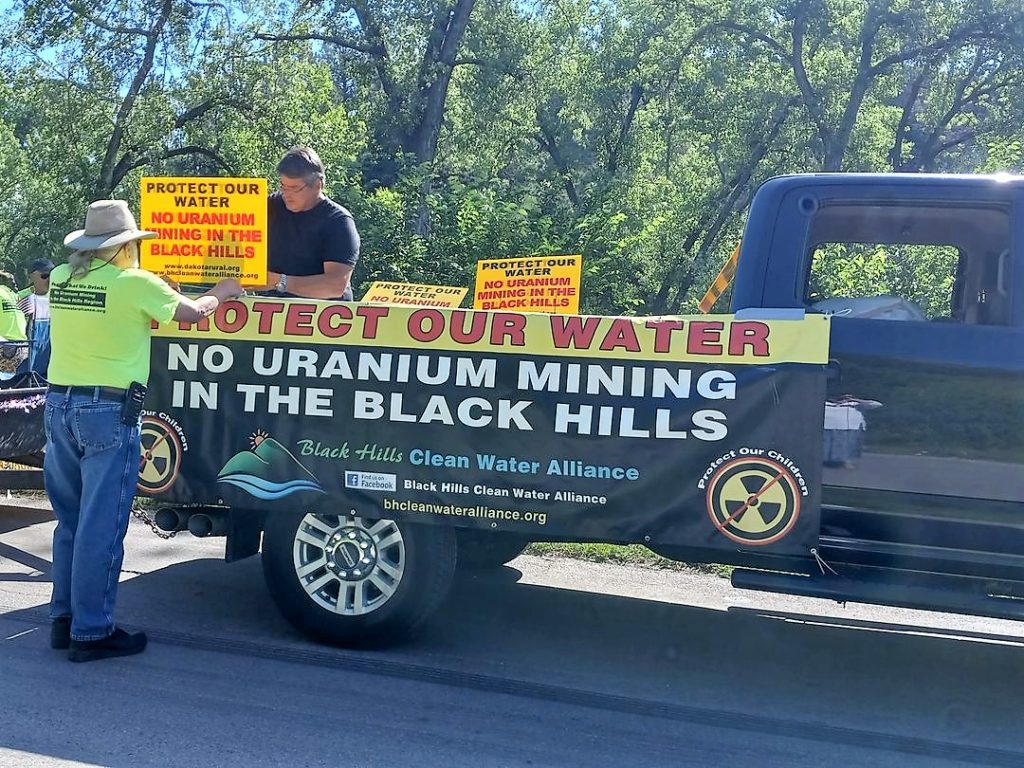
Great article, well and thoroughly researched and presented.
Thank you Catherine, we agree! Talli is a treasure, and we are lucky to have her collaboration.
We must do everything we can to save our water and to say no to uranium mining.
Absolutely agreed, Penny and Earl. Thank you for your comment – please share widely, and follow the Black Hills Clean Water Alliance, https://bhcleanwateralliance.org/ — and, of course, The Esperanza Project!